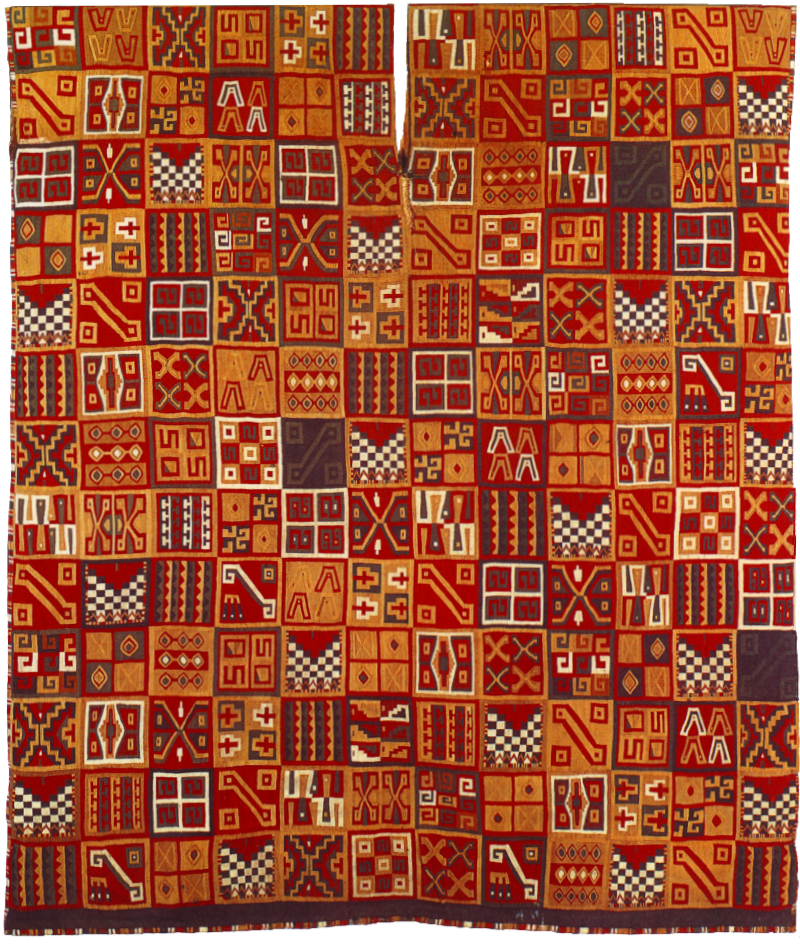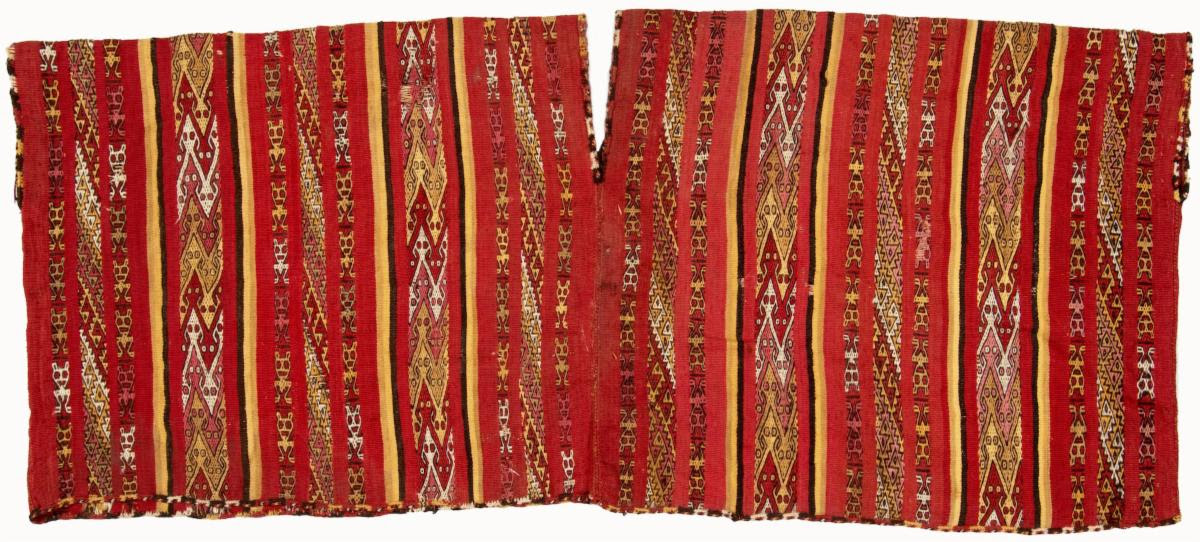|
Tambo (Incan Structure)
A tambo ( Quechua: ''tampu'', "inn") was an Incan structure built for administrative and military purposes. Found along the extensive roads, tambos typically contained supplies, served as lodging for itinerant state personnel, and were depositories of quipu-based accounting records. Individuals from nearby communities within the Inca empire were conscripted to maintain and serve in the tambos, as part of the mit'a labor system. Tambos were spaced along Incan roads, generally about one day's travel apart. Characteristics and functions The Incas built many of their tambos when they began to upgrade their empire-wide road system during the reign of Thupa Inka Yupanki from 1471 to 1493. Scholars estimate there were 2,000 or more tambos.D’Altroy, Terence N. The Incas. Blackwell Publishing, 2003, pg. 238. Given this amount, the sheer variety of tambo size and function are hard to fully describe. At a minimum, tambos would contain housing, cooking facilities, and storage silos cal ... [...More Info...] [...Related Items...] OR: [Wikipedia] [Google] [Baidu] |
Quechua Languages
Quechua (, ; ), usually called ("people's language") in Quechuan languages, is an indigenous language family spoken by the Quechua peoples, primarily living in the Peruvian Andes. Derived from a common ancestral language, it is the most widely spoken pre-Columbian language family of the Americas, with an estimated 8–10 million speakers as of 2004.Adelaar 2004, pp. 167–168, 255. Approximately 25% (7.7 million) of Peruvians speak a Quechuan language. It is perhaps most widely known for being the main language family of the Inca Empire. The Spanish encouraged its use until the Peruvian struggle for independence of the 1780s. As a result, Quechua variants are still widely spoken today, being the co-official language of many regions and the second most spoken language family in Peru. History Quechua had already expanded across wide ranges of the central Andes long before the expansion of the Inca Empire. The Inca were one among many peoples in present-day Peru who already sp ... [...More Info...] [...Related Items...] OR: [Wikipedia] [Google] [Baidu] |
Bolivia
, image_flag = Bandera de Bolivia (Estado).svg , flag_alt = Horizontal tricolor (red, yellow, and green from top to bottom) with the coat of arms of Bolivia in the center , flag_alt2 = 7 × 7 square patchwork with the (top left to bottom right) diagonals forming colored stripes (green, blue, purple, red, orange, yellow, white, green, blue, purple, red, orange, yellow, from top right to bottom left) , other_symbol = , other_symbol_type = Dual flag: , image_coat = Escudo de Bolivia.svg , national_anthem = " National Anthem of Bolivia" , image_map = BOL orthographic.svg , map_width = 220px , alt_map = , image_map2 = , alt_map2 = , map_caption = , capital = La Paz Sucre , largest_city = , official_languages = Spanish , languages_type = Co-official languages , languages ... [...More Info...] [...Related Items...] OR: [Wikipedia] [Google] [Baidu] |
Chasqui
The ''chasquis'' (also ) were the messengers of the Inca empire. Agile, highly trained and physically fit, they were in charge of carrying the , messages and gifts, up to 240 km per day through the relay system. ''Chasquis'' were not just messengers (those were young boys who were just used to pass along basic information); the were trained to be able to read and translate the to each other and higher authorities. Not only were they used to transport oral messages, but they also helped the inspector general, the Sapa Inka's brother, keep track of the people in the empire. Chasquis were chosen from the fittest young males and were known to be the fastest runners. Operation ''Chasquis'' were dispatched along thousands of kilometres, taking advantage of the vast Inca system of purpose-built roads and rope bridges in the Andes of Peru and Ecuador. On the coast of what is now Peru their route ran from Nazca to Tumbes. ''Chasqui'' routes also extended into further reaches of th ... [...More Info...] [...Related Items...] OR: [Wikipedia] [Google] [Baidu] |
Casuchas Del Rey
The Casuchas del Rey or Casuchas de la Cordillera are a string of small mountain shelters made of stone masonry along the route of the Uspallata Pass of the Principal Cordillera in the Andes of Chile and Argentina. The shelters were built to improve the intra-colonial postal system of the Spanish Empire. The shelters were created following the designs of Ambrosio O'Higgins in 1766 at a time when Cuyo was still part of the Captaincy General of Chile. Each shelter had a capacity for about thirty persons and stock of supplies inside. This included yerba mate as mate was highly valued by those who frequented the cold Andean highlands. Two events are credited to have triggered the construction of the mountain shelters, first O'Higgins near-death while crossing the Andes in 1763 and the Seven Years' War that made improvements to overland communication an imperative as seaborne communications between Buenos Aires and Lima could be intercepted and while the traditional route across P ... [...More Info...] [...Related Items...] OR: [Wikipedia] [Google] [Baidu] |
Santiago
Santiago (, ; ), also known as Santiago de Chile, is the capital and largest city of Chile as well as one of the largest cities in the Americas. It is the center of Chile's most densely populated region, the Santiago Metropolitan Region, whose total population is 8 million which is nearly 40% of the country's population, of which more than 6 million live in the city's continuous urban area. The city is entirely in the country's central valley. Most of the city lies between above mean sea level. Founded in 1541 by the Spanish conquistador Pedro de Valdivia, Santiago has been the capital city of Chile since colonial times. The city has a downtown core of 19th-century neoclassical architecture and winding side-streets, dotted by art deco, neo-gothic, and other styles. Santiago's cityscape is shaped by several stand-alone hills and the fast-flowing Mapocho River, lined by parks such as Parque Forestal and Balmaceda Park. The Andes Mountains can be seen from most ... [...More Info...] [...Related Items...] OR: [Wikipedia] [Google] [Baidu] |
Spanish Colonization Of The Americas
Spain began colonization of the Americas, colonizing the Americas under the Crown of Castile and was spearheaded by the Spanish . The Americas were invaded and incorporated into the Spanish Empire, with the exception of Colonial Brazil, Brazil, British America, and some small regions of South America and the Caribbean. The crown created civil and religious structures to administer the vast territory. The main motivations for colonial expansion were profit through Exploitation colonialism, resource extraction and the Catholicization, spread of Catholicism by converting Indigenous peoples of the Americas, indigenous peoples. Beginning with Columbus's first voyage to the Caribbean and gaining control over more territory for over three centuries, the Spanish Empire would expand across the Spanish West Indies, Caribbean Islands, half of South America, most of Central America and much of North America. It is estimated that during the colonial period (1492–1832), a total of 1.86&n ... [...More Info...] [...Related Items...] OR: [Wikipedia] [Google] [Baidu] |
Inca Society
The Inca society was the society of the Inca civilization in Peru. The Inca Empire, which lasted from 1438 to 1533 A.D., represented the height of this civilization. The Inca state was known as the Kingdom of Cusco before 1438. Over the course of the empire, the rulers used conquest and peaceful assimilation to incorporate a large portion of western South America, centered on the Andes mountain ranges. The empire proved relatively short-lived however: by 1533, Atahualpa, the last Sapa Inca (emperor) of the Inca Empire, was killed on the orders of the conquistador Francisco Pizarro, marking the beginning of Spanish rule. The last Inca stronghold, the Neo-Inca State in Vilcabamba, was conquered by the Spanish in 1572. Population Population estimates for the Tawantinsuyu society range from as few as 4.1 million people to more than 36 million. Most estimates are between 6 and 14 million people. The reason for these various estimates is that, while the Inca kept excellent census r ... [...More Info...] [...Related Items...] OR: [Wikipedia] [Google] [Baidu] |
Andean Civilizations
The Andean civilizations were complex societies of many cultures and peoples mainly developed in the river valleys of the coastal deserts of Peru. They stretched from the Andes of southern Colombia southward down the Andes to Chile and northwest Argentina. Archaeologists believe that Andean civilizations first developed on the narrow coastal plain of the Pacific Ocean. The Caral or Norte Chico civilization of Peru is the oldest known civilization in the Americas, dating back to 3200 BCE. Despite severe environmental challenges, the Andean civilizations domesticated a wide variety of crops, some of which became of worldwide importance. The Andean civilizations were also noteworthy for monumental architecture, textile weaving, and many unique characteristics of the societies they created. Less than a century prior to the arrival of the Spanish conquerors, the Incas, from their homeland centered on the city of Cusco, united most of the Andean cultures into one single empire that ... [...More Info...] [...Related Items...] OR: [Wikipedia] [Google] [Baidu] |
Spanish Conquest Of The Inca Empire
The Spanish conquest of the Inca Empire, also known as the Conquest of Peru, was one of the most important campaigns in the Spanish colonization of the Americas. After years of preliminary exploration and military skirmishes, 168 Spanish soldiers under conquistador Francisco Pizarro, his brothers, and their indigenous allies captured the Sapa Inca Atahualpa in the 1532 Battle of Cajamarca. It was the first step in a long campaign that took decades of fighting but ended in Spanish victory in 1572 and colonization of the region as the Viceroyalty of Peru. The conquest of the Inca Empire (called "Tahuantinsuyu" or "Tawantinsuyu" in Quechua, meaning "Realm of the Four Parts"), led to spin-off campaigns into present-day Chile and Colombia, as well as expeditions to the Amazon Basin and surrounding rainforest. When the Spanish arrived at the borders of the Inca Empire in 1528, it spanned a considerable area and was by far the largest of the four grand pre-Columbian civi ... [...More Info...] [...Related Items...] OR: [Wikipedia] [Google] [Baidu] |
Cusco
Cusco, often spelled Cuzco (; qu, Qusqu ()), is a city in Southeastern Peru near the Urubamba Valley of the Andes mountain range. It is the capital of the Cusco Region and of the Cusco Province. The city is the seventh most populous in Peru; in 2017, it had a population of 428,450. Its elevation is around . The city was the capital of the Inca Empire from the 13th century until the 16th-century Spanish conquest. In 1983, Cusco was declared a World Heritage Site by UNESCO with the title "City of Cuzco". It has become a major tourist destination, hosting nearly 2 million visitors a year. The Constitution of Peru (1993) designates it as the Historical Capital of Peru. Spelling and etymology The indigenous name of this city is . Although the name was used in Southern Quechua, its origin is found in the Aymara language. The word is derived from the phrase ('rock of the owl'), related to the city's foundation myth of the Ayar siblings. According to this legend, Ayar ... [...More Info...] [...Related Items...] OR: [Wikipedia] [Google] [Baidu] |
Qurikancha
Coricancha, Koricancha, Qoricancha or Qorikancha (''"The Golden Temple,"'' from Quechua ''quri'' gold; ''kancha'' enclosure) was the most important temple in the Inca Empire. It is located in Cusco, Peru, which was the capital of the empire. History Originally named ''Intikancha'' or ''Intiwasi'',''Qorikancha'' A Homage to the Mystical, Magical, most Famous and Oldest City of the American Continent it was dedicated to Inti, and is located at the former Inca capital of . Most of the temple was destroyed after the 16th-century war with the Spanish |
.jpg)
.png)
._Chasqui.jpg)




